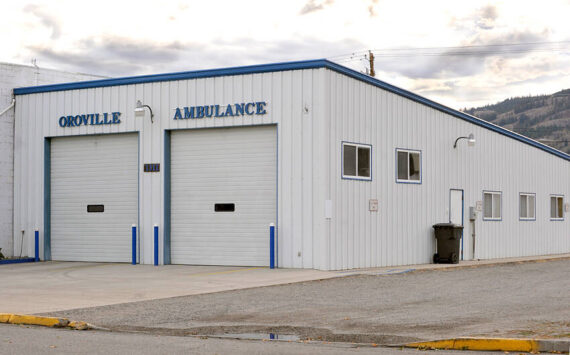Both herbicides and hand pulling by divers took place this summer
“So far it seems that the milfoil application is the least costly and most effective method,” concludes Ford Waterstrat, member of the Lake Osoyoos Association
OROVILLE – The Lake Osoyoos Association, a group of property owners and others concerned about Lake Osoyoos, offered a pesticide treatment program in order to try and get a handle on the rampant growth of Eurasian milfoil in the lake.
“We used our grant money that we got from the state Department of Ecology because we applied for a grant to helm with Eurasian milfoil eradication,” said Ford Waterstrat, an LOA member who also writes the groups newsletter.
The group asked lakefront property owners if they wanted to participate by paying for half the cost of the treatment and the response was good, according to Waterstrat.
Eurasian milfoil is a noxious weed believed to have been introduced as an aquarium plant. Its is easily spread from lake to lake by boats that are not cleaned off. Each little piece of the plant can grow into a new plant which can fowl props and can make swimming areas less desirable. In addition to boat props, wake boarders and skiiers can go through patches of milfoil, breaking off parts that will drop to the bottom of the lake and take root, forming a new plant, according to Waterstrat.
“We could not treat within what is called the ‘buffer zone’ which is within 1340 feet of the Canadian border,” he said. “Unfortunately there are some really bad places in that area.”
Both herbicides and hand pulling took place this summerIn the buffer zone the group hired a diver from Diversified Diver Specialities to hand pull the milfoil on Aug. 21 and 22. One diver feeds the weeds into a suction tube to suck the plant out and up into a nearby boat where the second diver places the milfoil in plastic bags, according to Waterstrat. The dried out plant can be used as fertilizer, he adds.
“This was a test case. We will evaluate the effectiveness of this process next summer,” said Waterstrat.
Two years ago the group also did a pilot program wher e they used weeviles to eat the milfoil stems.
“The cost of applying the herbicide is $3.25 to $3.50 per linear foot. The grant paid half and the individucal lakeshore owner paid the other half,” he said. “This year we had 40 people interested in the program and half of the list was made up of Canadian property owners.”
The group also purchased a weed rake for lakeshore owners to use. A couple of the owners have used the rake already to take care of the Curleyleaf Pondweed and have given positive reviews, writes Waterstrat in the September LOA newsletter. The rake can also be used to pull milfoil.
“So far it seems that the milfoil application is the least costly and most effective method,” concludes Waterstrat in the newsletter.







Comments are closed.